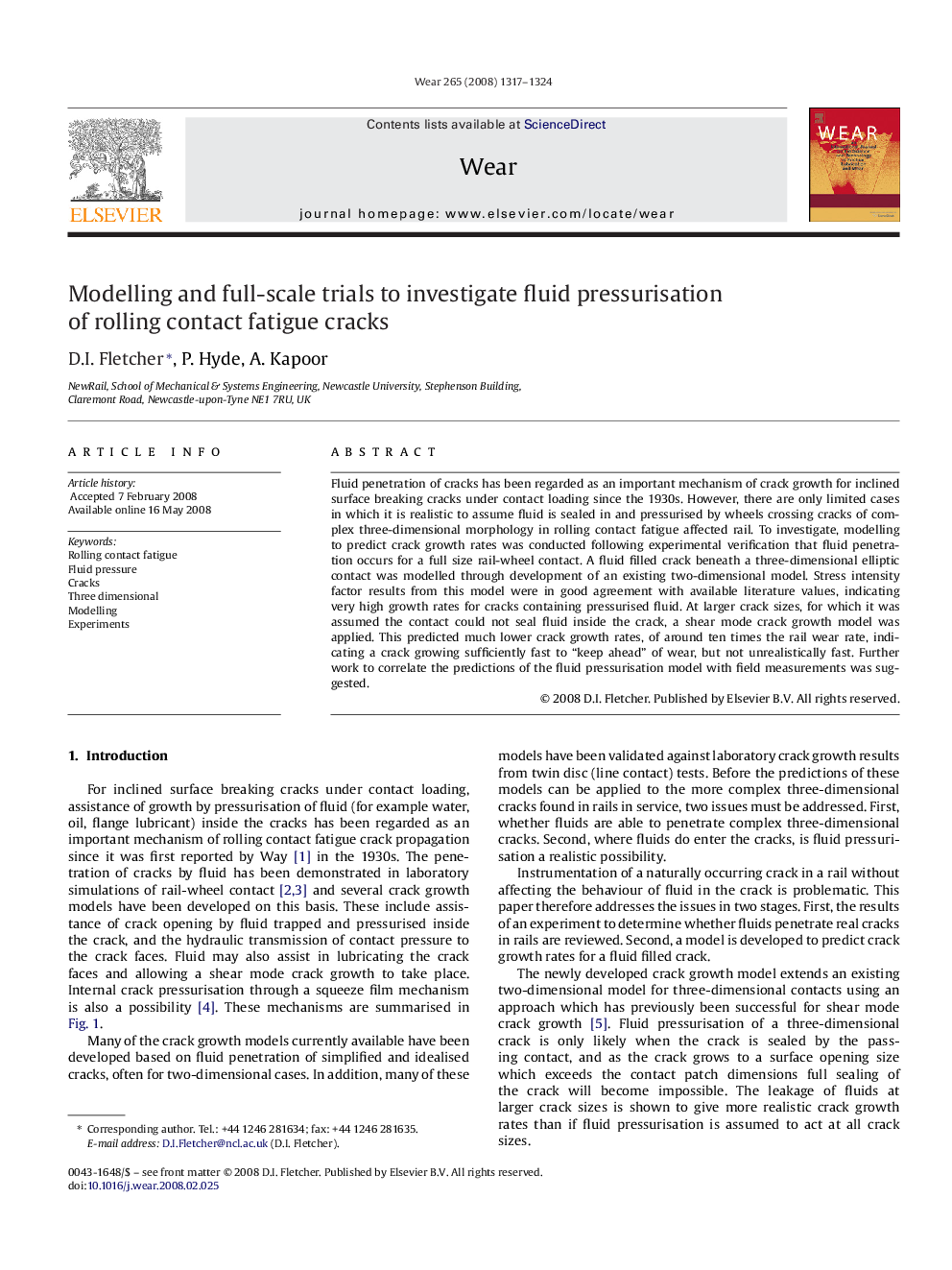| Article ID | Journal | Published Year | Pages | File Type |
|---|---|---|---|---|
| 619090 | Wear | 2008 | 8 Pages |
Fluid penetration of cracks has been regarded as an important mechanism of crack growth for inclined surface breaking cracks under contact loading since the 1930s. However, there are only limited cases in which it is realistic to assume fluid is sealed in and pressurised by wheels crossing cracks of complex three-dimensional morphology in rolling contact fatigue affected rail. To investigate, modelling to predict crack growth rates was conducted following experimental verification that fluid penetration occurs for a full size rail-wheel contact. A fluid filled crack beneath a three-dimensional elliptic contact was modelled through development of an existing two-dimensional model. Stress intensity factor results from this model were in good agreement with available literature values, indicating very high growth rates for cracks containing pressurised fluid. At larger crack sizes, for which it was assumed the contact could not seal fluid inside the crack, a shear mode crack growth model was applied. This predicted much lower crack growth rates, of around ten times the rail wear rate, indicating a crack growing sufficiently fast to “keep ahead” of wear, but not unrealistically fast. Further work to correlate the predictions of the fluid pressurisation model with field measurements was suggested.
